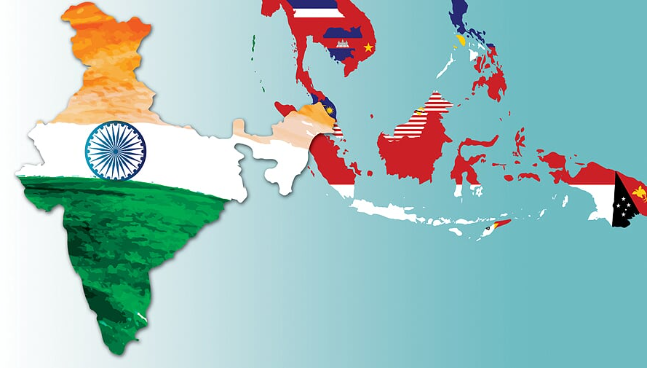Act East Policy
The Act East Policy is an initiative of the Government of India to strengthen economic and strategic relations with the nations of Southeast Asia. It is a successor to the Look East Policy, which was first formulated in the early 1990s. The Act East Policy was introduced by Prime Minister Narendra Modi at the 12th ASEAN-India Summit in Myanmar in November 2014.
Background
India’s Look East Policy, which was initiated in the early 1990s, marked a strategic shift in India’s perspective of the world. It aimed to cultivate extensive economic and strategic relations with Southeast Asian nations to bolster its standing as a regional power and a counterweight to the strategic influence of the People’s Republic of China.
The success of the Look East Policy prompted the Indian government to develop the Act East Policy, which was introduced in 2014. This new policy is designed to strengthen India’s role and involvement in the Asia-Pacific region.
Key Objectives
The main objectives of the Act East Policy are:
- To promote economic cooperation, cultural ties, and develop strategic relationships with countries in the Asia-Pacific region through continuous engagement at bilateral, regional, and multilateral levels.
- To enhance connectivity of Northeast Indian states with other countries in the neighborhood.
- To increase the exchange of culture, trade, people-to-people contact, and most importantly, connectivity with ASEAN countries.
- To strengthen India’s strategic and economic ties with the East Asian countries like Japan, South Korea, and Taiwan.
Initiatives and Developments
Under the Act East Policy, India has taken several initiatives and made significant developments:
- India has improved its relations with ASEAN countries. It became a Strategic Partner of ASEAN in 2012 and has been actively participating in various ASEAN-led forums like East Asia Summit, ASEAN Regional Forum, and ASEAN Defence Ministers’ Meeting Plus.
- India has strengthened its bilateral relations with countries like Japan, Vietnam, South Korea, Australia, and Singapore. India and Japan have formed a Special Strategic and Global Partnership. India and Vietnam have elevated their relationship to a Comprehensive Strategic Partnership.
- India has been working on infrastructure projects to improve connectivity with Southeast Asian countries. These include the India-Myanmar-Thailand Trilateral Highway, the Kaladan Multi-Modal Transit Transport Project, and the Rih-Tedim Road Project.
- India has been engaging with the Mekong subregion countries (Cambodia, Laos, Myanmar, Thailand, and Vietnam) under the Mekong-Ganga Cooperation initiative.
- India has also been focusing on its relations with the Pacific Island countries. In 2014, India hosted the Forum for India-Pacific Islands Cooperation (FIPIC) in Fiji.
Focus on Northeast India
One of the key aspects of the Act East Policy is the focus on developing India’s Northeast region. The Northeast is seen as India’s gateway to Southeast Asia. The Indian government has been working on various infrastructure projects to improve connectivity between the Northeast and the ASEAN countries.
Some of these projects include the Kaladan Multi-Modal Transit Transport Project, which will connect the Indian ports on the eastern seaboard with Sittwe port in Myanmar, and the India-Myanmar-Thailand Trilateral Highway, which will provide a road link between Northeast India and Southeast Asia.
Challenges
Despite the progress made under the Act East Policy, there are still several challenges that India faces:
- The infrastructure connectivity projects have been delayed due to various reasons, including land acquisition issues, environmental concerns, and security challenges.
- India’s trade with ASEAN countries is still relatively low compared to China’s trade with these nations.
- There are concerns about China’s growing influence in the region, particularly through its Belt and Road Initiative.
- The ongoing COVID-19 pandemic has also posed new challenges, affecting trade, travel, and diplomatic engagements.


